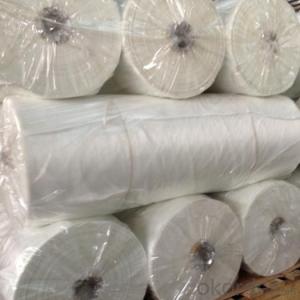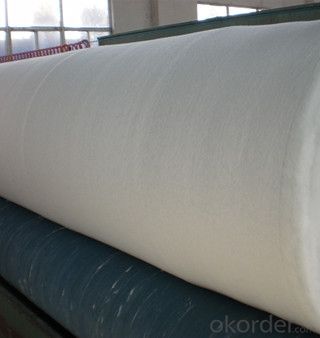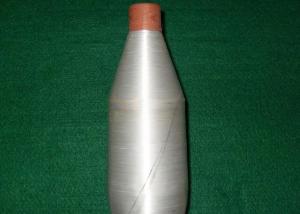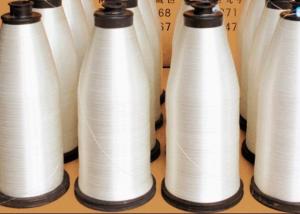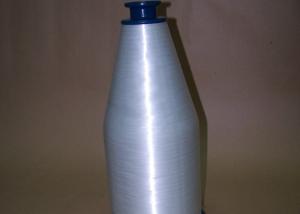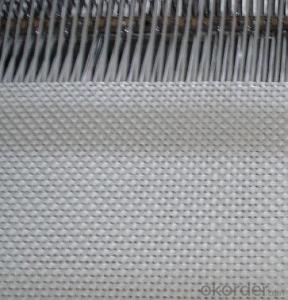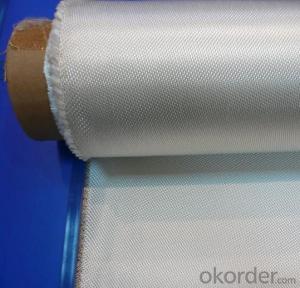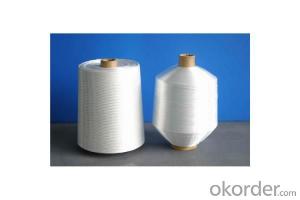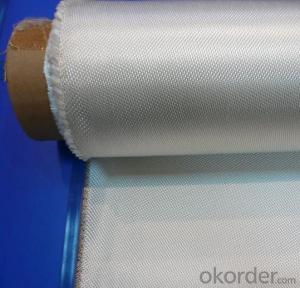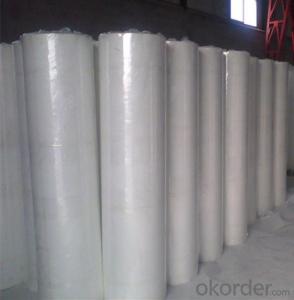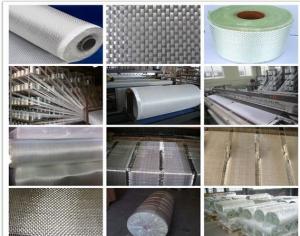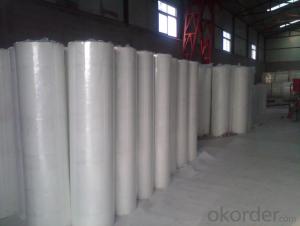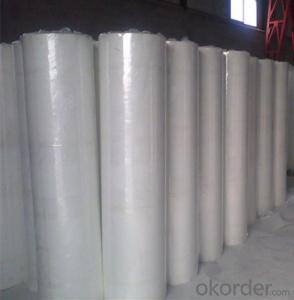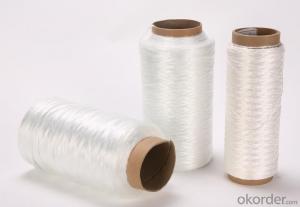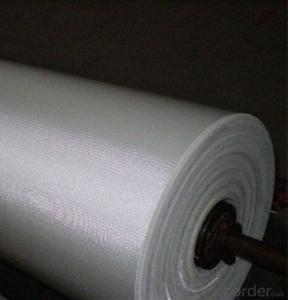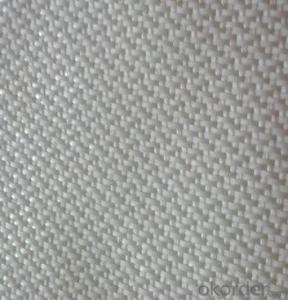Fiberglass Yarn Reinforced Fiberglass Fabric of Different Specifications
- Loading Port:
- Shanghai
- Payment Terms:
- TT OR LC
- Min Order Qty:
- 500 m²
- Supply Capability:
- 50000 m²/month
OKorder Service Pledge
OKorder Financial Service
You Might Also Like
Fiberglass Fabric of Different Specification
Fiberglass Fabric Introduction:
Fiberglass fabric is weaved by high quality fiberglass,as a kind of engineering material,which is
many excellent characteristics:
flame-resisting,corrosion resistant,high strength,heat resistance.stable structure,good chemical resistance,durability.
Fiberglass Fabric Features:
Warp and weft yarns are parallel arrangement as flat situation, with uniform tension;
Fiber is aligned with large consistency, stable and easy operation;
Good moldability, fast and complete wet out in resins, resulting in high productivity;
Good transparency and high strength of composite products.
Fiberglass Fabric Specification:
mark | Fiber consistency(ends/ cm) |
Area weight (g/ m2) |
Thick-ness (mm) |
Width (cm) |
Length (mm) | Breaking strength(N)≥ |
weave | |||
Warp direction | Weft direction | Warp direction | Weft direction | |||||||
EW200 | 16 | 12 | 200±20 | 0.2 | 90-130 | 300-1200 | 980 | 980 | ||
EW210 | 16 | 12 | 200±20 | 0.21 | 90-130 | 300-1200 | 1080 | 1080 | Twill weave | |
Plain weave | ||||||||||
EWR360 | 3.2 | 1.8 | 354±18 | 0.35 | 50-300 | 100 | 2000 | 2000 | ||
EW280 | 16 | 10 | 280±28 | 0.26 | 90-130 | 300-1200 | 1800 | 1800 | ||
EW300 | 14 | 10 | 320±32 | 0.3 | 90-130 | 300-1200 | 1500 | 1500 | ||
EW430 | 20 | 12 | 420±42 | 0.43 | 90-130 | 300-1200 | 2000 | 2000 | Broken twill | |
EWR136 | 10 | 10 | 136±13 | 0.136 | 100 | 200 | 850 | 850 |
Plain weave | |
EWR200 | 8 | 7 | 200±20 | 0.21 | 100 | 200 | 1200 | 1200 | ||
EWR400 | 3.6 | 3.2 | 400±30 | 0.4 | 100 | 50-100 | 2500 | 2500 | ||
EWR600 | 2.6 | 2.5 | 600±50 | 0.6 | 100 | 40KG | 4000 | 4000 | ||
EWR580 | 2.5 | 2.3 | 576±29 | 0.58 | 100 | 40KG | 3850 | 3850 | ||
EWR800 | 1.8 | 1.8 | 800±60 | 0.8 | 100 | 40KG | 4600 | 4600 | ||
Product Show
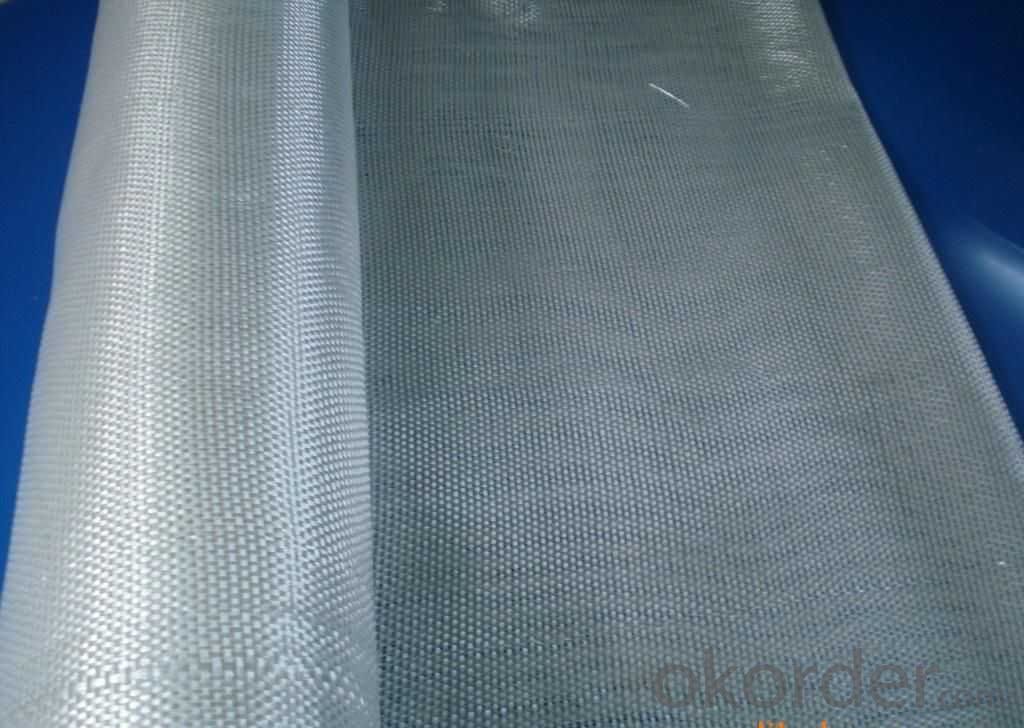
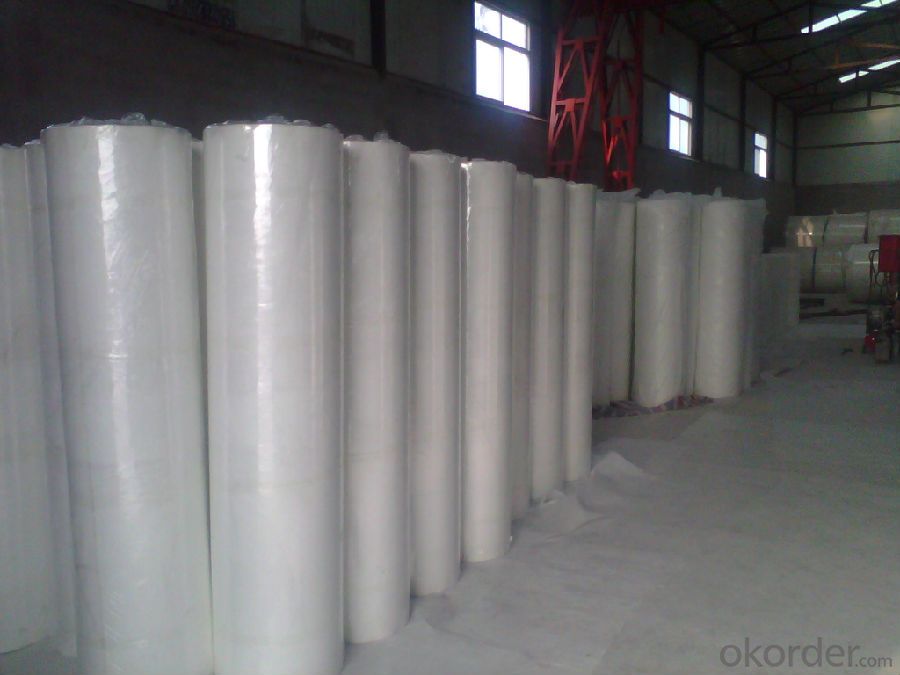
Fiberglass Fabric Usage:
E-glass woven roving is a schistose double faces reinforcement fabric that is weaved into from roving in directly.
E-glass fiber fabric (thin fabrics with thickness from 0.025 to 0.09mm) is suitable for electrical isolation mica product, wax cloth as the reinforcement materials.
E-glass woven roving applys to all kinds of polyester reinforcement system, (such as unsaturated polyester resin, vinylite,epoxy resin and phenolic resin.
E-glass woven roving is a high performance reinforcement material. It is widely used in hand lay-up and machinery processing products, (such as vessel, container, airplane and vehicle component, furniture, athletic facilities and other industry.
FAQ
1.Package of Fiberglass Fabric?
Fiberglass fabric is wound on a paper tube with inner diameters of 50. 8, 76 or 152mm. Each roll is wrapped in a plastic bag, then to be packed in a carton box. The rolls are to be horizontally placed.
Width (cm): 90, 100, 127
Length (m): 100, 200, 300, 400
2.Storage of Fiberglass Fabric?
Store rolls in a cool, dry location
Protect rolls from weather and other damage.
3.If sample available if needed?
We aim to offer our customer best Products&Service,samples are allowed if necessary.
- Q: Is fiberglass yarn resistant to acids or alkalis?
- Fiberglass yarn boasts remarkable acid and alkali resistance. This can be attributed to its inorganic composition, primarily consisting of silica, which grants it formidable protection against chemical harm. Fiberglass yarn remains largely unaffected by acids like sulfuric acid, hydrochloric acid, and nitric acid, rendering it a dependable material for industries working with corrosive substances. Likewise, fiberglass yarn displays resistance to alkalis like sodium hydroxide and potassium hydroxide. Thanks to this ability to withstand acids and alkalis, fiberglass yarn finds suitability in a range of industries, including chemical processing, water treatment, and electrical insulation.
- Q: Can fiberglass yarn be used for making insulation boards?
- Fiberglass yarn is indeed suitable for the production of insulation boards. This material is frequently utilized as a reinforcement in insulation boards due to its remarkable thermal insulation qualities and resistance to fire. It can be transformed into a fabric through weaving or knitting techniques, which subsequently serves as the foundation material for insulation boards. By incorporating fiberglass yarn, the insulation board gains both strength and durability, enabling its use in a wide range of applications within the construction and industrial sectors. Furthermore, fiberglass yarn possesses non-toxic properties and is highly resistant to moisture, rendering it an optimal selection for insulation boards that demand exceptional performance and longevity.
- Q: Can fiberglass yarn be used in insulation materials?
- Yes, fiberglass yarn can be used in insulation materials. Fiberglass yarn is made by spinning molten glass into fibers, which are then woven into a yarn. These yarns can be used as a reinforcement material in insulation products. The fiberglass yarn helps to strengthen the insulation material, making it more durable and resistant to tearing or breaking. Additionally, fiberglass yarn has excellent thermal insulation properties, making it an ideal choice for insulation materials. It helps to trap air and prevent heat transfer, keeping buildings cool in the summer and warm in the winter. Overall, fiberglass yarn is a commonly used component in insulation materials due to its strength and thermal insulation capabilities.
- Q: Can fiberglass yarn be used in ballistic applications?
- Indeed, ballistic applications can benefit from the utilization of fiberglass yarn. Renowned for its exceptional strength-to-weight ratio, fiberglass yarn proves to be an optimal material for endeavors demanding resilience against forceful impact and penetration, such as ballistic protection. The inherent qualities of the yarn, including its elevated tensile strength and impressive energy absorption capabilities, render it highly effective in intercepting projectiles and diminishing their impact. Furthermore, the versatility of fiberglass yarn allows for its incorporation into fabrics or composites through weaving or layering, thus facilitating diverse design possibilities and augmenting its ballistic attributes. Its remarkable resistance to heat and chemicals further bolsters its suitability for ballistic applications. In conclusion, the integration of fiberglass yarn in ballistic undertakings offers heightened safeguarding and longevity.
- Q: How flexible is fiberglass yarn?
- Fiberglass yarn is known for its excellent flexibility. It can be easily bent, twisted, or woven into various shapes without losing its strength or structural integrity. Its inherent flexibility makes it a versatile material for applications such as reinforcements in composites, insulation, and textile products.
- Q: Can fiberglass yarn be used for making insulation tape?
- Yes, fiberglass yarn can be used for making insulation tape. It is commonly used in the manufacturing of insulation tape due to its excellent thermal and electrical insulation properties.
- Q: How does the resistance to solvents of fiberglass yarn compare to other materials?
- Fiberglass yarn has excellent resistance to solvents compared to most other materials. Its chemical composition and structure make it highly resistant to the damaging effects of solvents, allowing it to retain its strength and integrity even in harsh chemical environments. This resistance is one of the key advantages of using fiberglass yarn in various applications where contact with solvents is expected.
- Q: How does fiberglass yarn perform in electrical insulation?
- Fiberglass yarn performs exceptionally well in electrical insulation due to its high dielectric strength and excellent thermal resistance. It effectively prevents the flow of electrical current and minimizes the risk of short circuits or electrical hazards. Additionally, fiberglass yarn is resistant to moisture, chemicals, and UV radiation, making it a reliable and durable choice for electrical insulation applications.
- Q: How does fiberglass yarn affect the acoustic properties of a product?
- Fiberglass yarn plays a significant role in modifying the acoustic properties of a product. Due to its unique composition and structure, fiberglass yarn can effectively control and manipulate sound waves, resulting in improved acoustic performance. One of the main advantages of fiberglass yarn is its high density and rigidity, which contributes to its excellent sound absorption capabilities. When used in products such as acoustic panels, insulation materials, or soundproofing barriers, fiberglass yarn helps to reduce and dampen noise by absorbing sound energy. This absorption occurs as sound waves pass through the product, causing the fiberglass yarn to vibrate and convert the sound energy into heat energy. Moreover, the composition of fiberglass yarn allows for effective sound insulation. It acts as a barrier to prevent the transmission of sound waves from one area to another. This is particularly useful in applications such as building insulation or automotive components, where the goal is to minimize the transfer of noise from outside sources. Additionally, fiberglass yarn can enhance the overall acoustics of a product by improving its sound reflection and diffusion properties. By strategically placing fiberglass yarn within a product, it can help to scatter and disperse sound waves more evenly, reducing the occurrence of echoes, reverberation, or standing waves. This is especially important in spaces such as concert halls, recording studios, or home theaters, where optimal sound quality and clarity are desired. In summary, fiberglass yarn greatly influences the acoustic properties of a product by providing sound absorption, insulation, and reflection/diffusion capabilities. Its ability to control and manipulate sound waves makes it a valuable component for various applications, ultimately leading to improved acoustic performance.
- Q: Is fiberglass yarn suitable for making sports helmets?
- Sports helmets can be made using fiberglass yarn, which is a suitable choice. Fiberglass is a strong and durable material that offers excellent resistance against impact, a critical factor in safeguarding the head during sports activities. Notably, it is lightweight, ensuring increased comfort and freedom of movement while wearing the helmet. Moreover, fiberglass possesses commendable heat resistance and can withstand extreme temperatures, making it appropriate for use in varied sports settings. Additionally, fiberglass yarn can be effortlessly molded into diverse helmet shapes, guaranteeing a personalized fit for each person. In conclusion, due to its strength, durability, lightweight nature, and ability to provide essential protection, fiberglass yarn is an appropriate material for sports helmet production.
Send your message to us
Fiberglass Yarn Reinforced Fiberglass Fabric of Different Specifications
- Loading Port:
- Shanghai
- Payment Terms:
- TT OR LC
- Min Order Qty:
- 500 m²
- Supply Capability:
- 50000 m²/month
OKorder Service Pledge
OKorder Financial Service
Similar products
Hot products
Hot Searches
Related keywords
